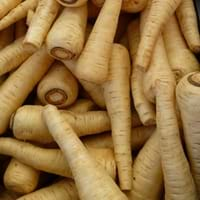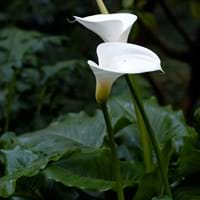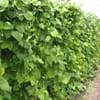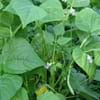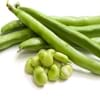Life Span
Biennial and Perennial
Perennial
Type
Vegetable
Bulb, Flowering Plants
Origin
Europe, Western Asia
South Africa, Swaziland
Types
Not Available
Passionfruit, Fire glow, Gem rose, Blaze, Crystal blush
Number of Varieties
Not Available
Habitat
waste ground, wastelands
Swamps
USDA Hardiness Zone
4-9
8-10
Sunset Zone
A1, A2, A3, H1, H2, 1a, 1b, 2a, 2b, 3a, 3b, 4, 5, 6, 7, 8, 9, 10, 11, 12, 13, 14, 15, 16, 17, 18, 19, 20, 21, 22, 23, 24
2a, 2b, 5, 6, 8, 9, 12, 13, 14, 15, 16, 17, 18, 19, 20, 21, 22, 23, 24
Habit
Rosette/Stemless
Clump-Forming
Flower Color
Yellow
Blue, Dark Purple, Light Purple, Red, White
Flower Color Modifier
Bicolor
Bicolor
Fruit Color
Brown, Black
Not Available
Leaf Color in Spring
Green
Dark Green
Leaf Color in Summer
Green
Green, Dark Green
Leaf Color in Fall
Green
Green, Dark Green
Leaf Color in Winter
Not Available
Green, Dark Green
Leaf Shape
Pinnate
Arrowhead
Plant Season
Summer
Autumn, Spring, Summer
Sunlight
Full Sun
Full Sun, Part sun, Partial shade
Growth Rate
Medium
Medium
Type of Soil
Loam
Clay, Loamy
The pH of Soil
Neutral
Neutral, Slightly Acidic
Soil Drainage
Well drained
Average
Bloom Time
Summer
Spring, Summer
Tolerances
Drought
Wet Site
Where to Plant?
Ground, Pot
Container, Pot
How to Plant?
Seedlings
From bulbs, From Rhizomes, Seedlings, Transplanting
Plant Maintenance
Medium
Medium
Watering Requirements
Average Water Needs, Do Not over Water, Keep the ground moist but not water-logged
Over-watering can cause leaf problems or root diseases, Requires a lot of watering
In Summer
Lots of watering
Lots of watering
In Spring
Moderate
Moderate
In Winter
Average Water
Average Water
Soil pH
Neutral
Neutral, Slightly Acidic
Soil Type
Loam
Clay, Loamy
Soil Drainage Capacity
Well drained
Average
Sun Exposure
Full Sun
Full Sun, Part sun, Partial shade
Pruning
Remove damaged leaves, Remove dead branches, Remove dead leaves
Prune to stimulate growth, Remove dead or diseased plant parts, Remove deadheads
Fertilizers
All-Purpose Liquid Fertilizer
All-Purpose Liquid Fertilizer
Pests and Diseases
Aphids, Armyworm, Cutworms, Downy mildew, Pitch canker, Red blotch
Armillaria mellea, Gray mold, Leaf spot, Powdery mildew, Pythium rot, Rhizoctonia crown rot, Root rot, Thripes
Plant Tolerance
Drought
Drought
Flower Petal Number
Not Available
Single
Fragrant Bark/Stem
Yes
No
Foliage Texture
Fine
Coarse
Foliage Sheen
Matte
Glossy
Attracts
Butterflies
Not Available
Allergy
Stomach burn
Diarrhea, Intestinal gas, Vomiting
Aesthetic Uses
Not Available
Beautification, Bouquets
Beauty Benefits
Blood purifying, Good for skin
Not Available
Environmental Uses
Air purification
Air purification
Medicinal Uses
Aphrodisiac
Not Available
Part of Plant Used
Root
Flowers
Other Uses
Food for animals, Used as a nutritious food item
Showy Purposes
Used As Indoor Plant
Yes
No
Used As Outdoor Plant
Yes
Yes
Garden Design
Edible, Herb, Vegetable
Not Available
Botanical Name
PASTINACA sativa
Zantedeschia Aethiopica
Common Name
Parsnip
Calla Lily
In Hindi
चुकंदर
Calla Lily
In German
Pastinake
Calla-Lilien-
In French
Panais
Lys calla
In Greek
Είδος δαυκίου
Calla κρίνος
In Portuguese
cherivia
Calla
In Polish
Pasternak
Calla Lily
In Latin
parsnip
Calla Lilium
Phylum
Magnoliophyta
Magnoliophyta
Class
Magnoliopsida
Liliopsida
Order
Apiales
Alismatales
Genus
Abelia
Zantedeschia
Clade
Angiosperms, Asterids, Eudicots
Angiosperms, Monocots
Tribe
Not Available
Zantedeschieae
Subfamily
Not Available
Aroideae
Number of Species
Not Available
Season and Care of Parsnip and Calla Lily
Season and care of Parsnip and Calla Lily is important to know. While considering everything about Parsnip and Calla Lily Care, growing season is an essential factor. Parsnip season is Summer and Calla Lily season is Summer. The type of soil for Parsnip is Loam and for Calla Lily is Clay, Loamy while the PH of soil for Parsnip is Neutral and for Calla Lily is Neutral, Slightly Acidic.
Parsnip and Calla Lily Physical Information
Parsnip and Calla Lily physical information is very important for comparison. Parsnip height is 15.20 cm and width 7.60 cm whereas Calla Lily height is 60.00 cm and width 60.00 cm. The color specification of Parsnip and Calla Lily are as follows:
Parsnip flower color: Yellow
Parsnip leaf color: Green
Calla Lily flower color: Blue, Dark Purple, Light Purple, Red and White
- Calla Lily leaf color: Dark Green
Care of Parsnip and Calla Lily
Care of Parsnip and Calla Lily include pruning, fertilizers, watering etc. Parsnip pruning is done Remove damaged leaves, Remove dead branches and Remove dead leaves and Calla Lily pruning is done Prune to stimulate growth, Remove dead or diseased plant parts and Remove deadheads. In summer Parsnip needs Lots of watering and in winter, it needs Average Water. Whereas, in summer Calla Lily needs Lots of watering and in winter, it needs Average Water.
